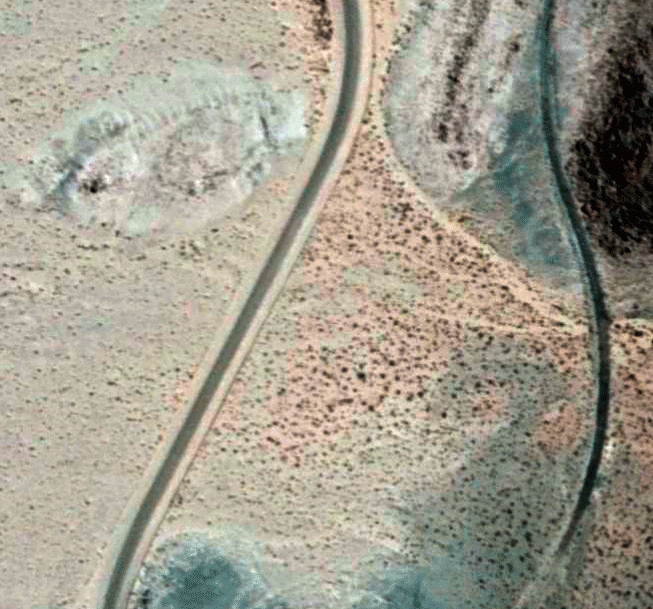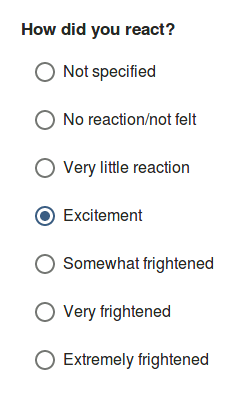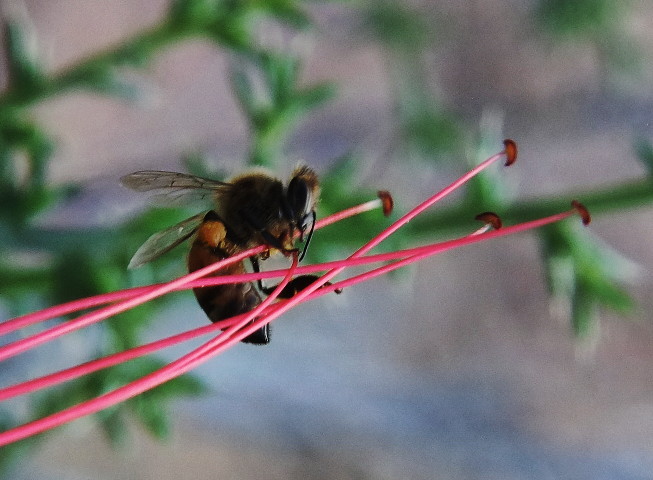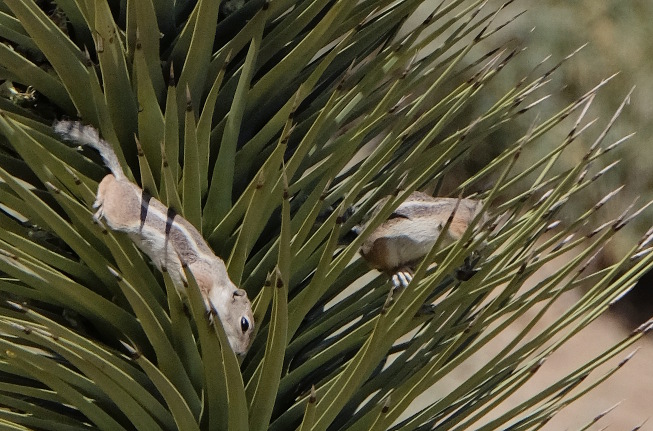July 2019 archive
Tuesday 30 Jul 2019 comment?
One who knows does not speak; Because if you're commenting on it, |
Saturday 27 Jul 2019 comment?
I heard about this problem from Presh Talwalkar. It's supposedly from China where it was used to identify gifted fifth graders.
ABCD is a parallelogram. The four regions shaded in gray have areas as marked. What is the area of the region shaded in red? The diagram Presh Talwalkar gives is not to scale,
which got me wondering whether the premises are even possible.
(Mr. Talwalkar is not averse to posing a problem with
impossible
geometry to keep readers on their toes.)
The diagram Presh Talwalkar gives is not to scale,
which got me wondering whether the premises are even possible.
(Mr. Talwalkar is not averse to posing a problem with
impossible
geometry to keep readers on their toes.)
So in addition to the problem as given (which is a nice problem), there's also the problem of whether there are enough degrees of freedom in the placement of the lines to allow areas of 8, 10, 72, and 79 as shown.
I heard about this problem from Presh Talwalkar. It's supposedly from China where it was used to identify gifted fifth graders.
ABCD is a parallelogram. The four regions shaded in gray have areas as marked. What is the area of the region shaded in red?
 The diagram Presh Talwalkar gives is not to scale,
which got me wondering whether the premises are even possible.
(Mr. Talwalkar is not averse to posing a problem with
impossible
geometry to keep readers on their toes.)
The diagram Presh Talwalkar gives is not to scale,
which got me wondering whether the premises are even possible.
(Mr. Talwalkar is not averse to posing a problem with
impossible
geometry to keep readers on their toes.)
So in addition to the problem as given (which is a nice problem), there's also the problem of whether there are enough degrees of freedom in the placement of the lines to allow areas of 8, 10, 72, and 79 as shown.
Friday 26 Jul 2019 comment?
Jackrabbits have their favorite shady spots to wait out midday summer heat. Thirteen summers ago, I wrote about one who had dug out a spot next to a shrub—but he* stopped hanging out there before I got a photo.
This year, a jackrabbit chose a spot next to the north wall of my garage. He* is there every day. I've made a point of walking slowly in his presence. He's accustomed to me now and doesn't move when I take my car out of the garage door six feet away.
* he or she, I can't tell

Jackrabbits have their favorite shady spots to wait out midday summer heat. Thirteen summers ago, I wrote about one who had dug out a spot next to a shrub—but he* stopped hanging out there before I got a photo.
This year, a jackrabbit chose a spot next to the north wall of my garage. He* is there every day. I've made a point of walking slowly in his presence. He's accustomed to me now and doesn't move when I take my car out of the garage door six feet away.
* he or she, I can't tell

Wednesday 24 Jul 2019 comment?


Mouseover
to see damage from earthquakes earlier this month.
Near Ridgecrest, California (35.7222,-117.5715).
Excerpted from images from Sotiris Valkaniotis.
Near Ridgecrest, California (35.7222,-117.5715).
Excerpted from images from Sotiris Valkaniotis.
Saturday 20 Jul 2019 1 comment
A friend once gave me a sweatshirt with e painted on it (a portion of its decimal representation, followed by an ellipsis). Wearing it led to people asking what it meant. I usually gave an example using compound interest:
Imagine that a bank account pays 100% interest in a year. With simple interest (a 100% dividend at the end of the year), a $1 balance becomes $2 after a year. With interest compounded semianually, $1 becomes $1.50 after six months and $2.25 after a year. Compounding quarterly gives $2.44. Compounding daily gives $2.71. Shortening the compounding period increases the ending balance but never by a factor greater than e.
People get the idea, but to really get it requires understanding limits. There is a plethora of different (but equivalent) ways to define e but most of them involve a limit, derivative, or integral. Here's one that doesn't:
A group of men go to a party, each man wearing a hat. At the party, they throw their hats into a box. They shake the box and each man takes a hat from the box before leaving.
How many ways can the hats be distributed? For n men and n hats, this is counting permutations; the answer is n! (n factorial).
How many ways can the hats be distributed such that every man leaves with a different hat than the one he came with? This is counting derangements, and a formula for counting them is less obvious. Examples:
The number of derangements of
n
objects turns out to be
n!/e,
rounded to the nearest integer. (A proof is beyond the
scope of this blog posting.)
This provides a suitable basis for defining
e:
A friend once gave me a sweatshirt with e painted on it (a portion of its decimal representation, followed by an ellipsis). Wearing it led to people asking what it meant. I usually gave an example using compound interest:
Imagine that a bank account pays 100% interest in a year. With simple interest (a 100% dividend at the end of the year), a $1 balance becomes $2 after a year. With interest compounded semianually, $1 becomes $1.50 after six months and $2.25 after a year. Compounding quarterly gives $2.44. Compounding daily gives $2.71. Shortening the compounding period increases the ending balance but never by a factor greater than e.
People get the idea, but to really get it requires understanding limits. There is a plethora of different (but equivalent) ways to define e but most of them involve a limit, derivative, or integral. Here's one that doesn't:
A group of men go to a party, each man wearing a hat. At the party, they throw their hats into a box. They shake the box and each man takes a hat from the box before leaving.
How many ways can the hats be distributed? For n men and n hats, this is counting permutations; the answer is n! (n factorial).
How many ways can the hats be distributed such that every man leaves with a different hat than the one he came with? This is counting derangements, and a formula for counting them is less obvious. Examples:
| n | permutations | derangements |
|---|---|---|
| 1 | 1! = 1 | 0 |
| 2 | 2! = 2 | 1 |
| 3 | 3! = 6 | 2 |
| 4 | 4! = 24 | 9 |
| 5 | 5! = 120 | 44 |
| 6 | 6! = 720 | 265 |
| 7 | 7! = 5040 | 1854 |
e is the unique real number
such that n!/e
rounded to the nearest integer is the count of derangements of
n
objects for all positive integer values of
n.
This is a somewhat lengthier illustration of
e
than the complex interest example but it is notable for not involving any
calculus concepts.
Sunday 14 Jul 2019 comment?
I saw an eclipse of the sun in Mexico in 1991. People were jazzed during the initial partial phases of the eclipse. Excitement was in the air. After totality, the same partial phases happened in reverse but no one cared. Everyone went inside to have lunch.
Most climbers are more interested in climbing up than down. After climbing a route, we lower ourselves with rope or walk back to the base of the rock on a trail.
Squirrels and lizards both climb my Joshua tree. They run away if I draw near which of course requires first getting down off the tree. Squirrels climb down the way they went up, whereas lizards jump off. This is the difference between squirrels and lizards.
I saw an eclipse of the sun in Mexico in 1991. People were jazzed during the initial partial phases of the eclipse. Excitement was in the air. After totality, the same partial phases happened in reverse but no one cared. Everyone went inside to have lunch.
Most climbers are more interested in climbing up than down. After climbing a route, we lower ourselves with rope or walk back to the base of the rock on a trail.
Squirrels and lizards both climb my Joshua tree. They run away if I draw near which of course requires first getting down off the tree. Squirrels climb down the way they went up, whereas lizards jump off. This is the difference between squirrels and lizards.
Tuesday 09 Jul 2019 1 comment
My allowance was 25 cents a week when Mad magazine raised their price from 25¢ to 30¢. I remember going back to my mom and asking for more when the price went up. (I don't remember her response.) I see from covers of Mad on the web that the 30¢ price started with the June '65 issue. Ergo, I was reading Mad when I was five years old.
New York had 2% sales tax at the time. The state published a tax table that didn't round up when tax would be ½¢, i.e. there was no sales tax on a 25¢ purchase but there was a penny tax on 26¢ to 75¢.
Someone in Australia once sent a letter (or postcard, can't remember) to Mad's offices in New York City with just a stamp on it and a drawing of Alfred E. Neuman. It got there.
My allowance was 25 cents a week when Mad magazine raised their price from 25¢ to 30¢. I remember going back to my mom and asking for more when the price went up. (I don't remember her response.) I see from covers of Mad on the web that the 30¢ price started with the June '65 issue. Ergo, I was reading Mad when I was five years old.
New York had 2% sales tax at the time. The state published a tax table that didn't round up when tax would be ½¢, i.e. there was no sales tax on a 25¢ purchase but there was a penny tax on 26¢ to 75¢.
Someone in Australia once sent a letter (or postcard, can't remember) to Mad's offices in New York City with just a stamp on it and a drawing of Alfred E. Neuman. It got there.
Friday 05 Jul 2019 comment?
Another day, another earthquake. Today's was bigger than yesterday's. I'm fine, nothing's damaged. Wikipedia on these quakes.
Another day, another earthquake. Today's was bigger than yesterday's. I'm fine, nothing's damaged. Wikipedia on these quakes.
Thursday 04 Jul 2019 comment?
 There
was a magnitude 6.4
earthquake this morning centered about 70 miles from me.
It didn't feel strong at my house but it lasted a while. There
was a magnitude 6.4
earthquake this morning centered about 70 miles from me.
It didn't feel strong at my house but it lasted a while.
The USGS has a web page for people to describe what they felt at their location. The question to the right was my favorite. |
current journal
FAQ
search
contact
rss/xml
atom/xml
spam notice
terms of use
warrant canary
archive
FAQ
search
contact
rss/xml
atom/xml
spam notice
terms of use
warrant canary
archive
| jan | feb | mar |
| apr | may | jun |
| jul | aug | sep |
| oct | nov | dec |
| jan | feb | mar |
| apr | may | jun |
| jul | aug | sep |
| oct | nov | dec |
| jan | feb | mar |
| apr | may | jun |
| jul | aug | sep |
| oct | nov | dec |
| jan | feb | mar |
| apr | may | jun |
| jul | aug | sep |
| oct | nov | dec |
| jan | feb | mar |
| apr | may | jun |
| jul | aug | sep |
| oct | nov | dec |
| jan | feb | mar |
| apr | may | jun |
| jul | aug | sep |
| oct | nov | dec |
| jan | feb | mar |
| apr | may | jun |
| jul | aug | sep |
| oct | nov | dec |
| jan | feb | mar |
| apr | may | jun |
| jul | aug | sep |
| oct | nov | dec |
| jan | feb | mar |
| apr | may | jun |
| jul | aug | sep |
| oct | nov | dec |
| jan | feb | mar |
| apr | may | jun |
| jul | aug | sep |
| oct | nov | dec |
| jan | feb | mar |
| apr | may | jun |
| jul | aug | sep |
| oct | nov | dec |
| jan | feb | mar |
| apr | may | jun |
| jul | aug | sep |
| oct | nov | dec |
| jan | feb | mar |
| apr | may | jun |
| jul | aug | sep |
| oct | nov | dec |
| jan | feb | mar |
| apr | may | jun |
| jul | aug | sep |
| oct | nov | dec |
| jan | feb | mar |
| apr | may | jun |
| jul | aug | sep |
| oct | nov | dec |
| jan | feb | mar |
| apr | may | jun |
| jul | aug | sep |
| oct | nov | dec |
| jan | feb | mar |
| apr | may | jun |
| jul | aug | sep |
| oct | nov | dec |
| jan | feb | mar |
| apr | may | jun |
| jul | aug | sep |
| oct | nov | dec |
| jan | feb | mar |
| apr | may | jun |
| jul | aug | sep |
| oct | nov | dec |
| jan | feb | mar |
| apr | may | jun |
| jul | aug | sep |
| oct | nov | dec |
| jan | feb | mar |
| apr | may | jun |
| jul | aug | sep |
| oct | nov | dec |
| jan | feb | mar |
| apr | may | jun |
| jul | aug | sep |
| oct | nov | dec |
| jan | feb | mar |
| apr | may | jun |
| jul | aug | sep |
| oct | nov | dec |




